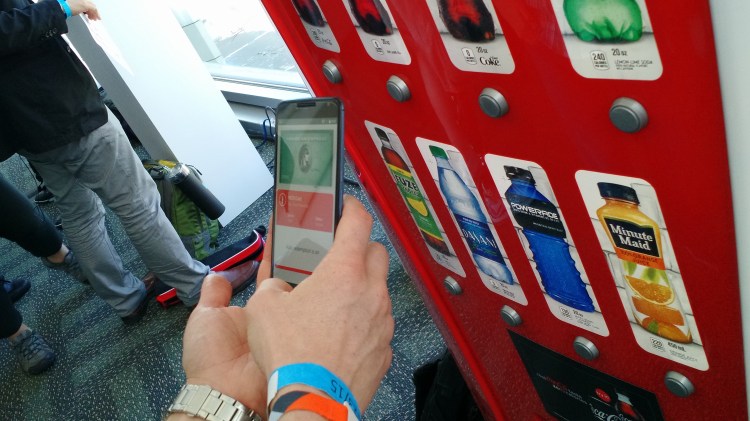Google is starting to roll out its digital payment system Android Pay in the U.S. today. The new digital wallet allows users to make payments for purchases in stores using their phone.
Android Pay can be downloaded to any phone running an Android operating system of KitKat 4.4 or higher. Upon launch, it will be accepted at over one million locations, including name brands like Toys ‘R’ Us, Whole Foods, McDonald’s, and Bloomingdale’s. In total Android Pay is launching with twenty merchant partners and a fleet of banks (American Express, Discover, MasterCard, Visa, Bank of America, Capital One, Discover, Navy Federal Credit Union, PNC, Regions Bank, USAA, Citi, Wells Fargo, and US Bank).
The launch may be a little confusing for existing Google Wallet users, so take note. When current Google Wallet owners go to update the app, it will be replaced with the new Android Pay. Once updated to Android Pay, they’ll no longer be able to make peer-to-peer payments. In order to give friends money, users will have to download the new Google Wallet, which only executes peer-to-peer payments.
Two wallets
Forcing consumers to use to two separate wallets for different payment functionalities may be a misstep on Google’s part. For one, it’s immediately confusing. Users may be confounded as to why they can no longer use their digital wallet to pay their friends. Secondly, it asks that users download yet another app for a service that should be included in a single wallet.
It could be argued that Google is a step ahead of competitors like Apple Pay and Samsung Pay because it offers peer-to-peer payments at all. Neither Apple Pay or Samsung Pay offer peer-to-peer money exchanging. However, there is a whole other market of more successful peer-to-peer technologies that Google Wallet has to compete with like Square Cash, Venmo, PayPal, and others. Even Facebook Messenger has a peer-to-peer payment method now.
Also, it seems that both Apple and Samsung are far more interested in facilitating commercial transactions than payments between friends.
Paying at the register
There is a race to develop what is essentially the next credit card. Apple, Google, Samsung, and others are trying to make a digital wallet that encompasses both payments and consumer rewards programs. But getting customers to scan their phones at the register is proving difficult. One study shows that Apple Pay, which launched last November, has low rates of adoption. Only 13 percent of iPhone 6 users have used Apple Pay, according to the study. The reason is because people often don’t remember where they can pay with Apple Pay, and in general they forget to use it even at stores that accept it.
Android Pay, with its limited number of partners, may face some of the same hurdles. However, competitor Samsung Pay might not. Samsung Pay, which launches later this month, said it will be able to make payments at 99 percent of retailers. That may make it less confusing for consumers and possibly more enticing for them to sign up.
Then again, no digital wallet has really been able to make the case to consumers for why they should start using their phone to make payments instead of their credit card.
Missed opportunity
Though eventually we may be paying for everything with the tap of a phone screen, consumers are not there yet. In the meantime, there is a big opportunity to get mobile shoppers to adopt the technology for purchases made in apps. An increasing number of people are shopping on their phones. A report from Statista projects that mobile shopping will account for a quarter of all ecommerce transactions in 2015.
But shopping on a phone, like shopping on a computer, can be an irritating endeavor. Entering payment and delivery information is such an annoyance to shoppers that they’d often rather abandon their shopping cart than spend a few minutes filling it out.
When Apple Pay launched last year, it gave its users the ability to use Apple Pay both for in-store and in-app purchases. Employed in an app, it means that consumers can pay for a purchase by scanning their fingertip. That ease of use is enticing for those of us who are already making purchases on our phones.
Notably, neither Samsung Pay nor Android Pay has followed Apple’s lead and have instead focused their technology on in-store payments, where digital wallets are less meaningful to consumers.
Google says it’s planning on launching just such a functionality later this year, though there’s no official timing on the roll out. This may give Google an advantage over Samsung, whose competing payment method is automatically installed on some of the most popular Android phones. Google has already started messing around with a “buy button” that lets shoppers buy goods directly from ads in search results. Working this functionality into Android Pay so that consumers can make purchases in-app could make the app more relevant — even to Samsung owners.
Update: Android Pay will roll out a buy button for in-app purchases later this year.


